How Many Plants to Feed Family of Four Calories
When you really start thinking about gardening in terms of raising enough food to sustain yourself and your loved ones throughout an entire year, it can be hard to comprehend just how much you should plan on planting. Most of us have no idea what a year's worth of home-grown food even looks like.
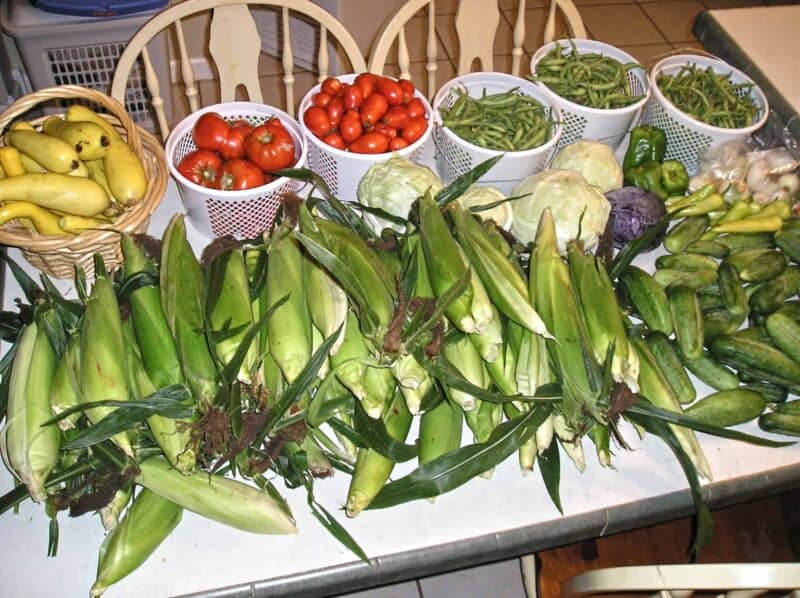
Unfortunately, if you're looking for a very specific and exact answer, I'm afraid you just won't find it. Every family's needs and eating habits are different.
And some foods may not grow well in your region, so each of you needs to tailor your garden accordingly. But I do have a list here for you to refer to, and it's a great starting point.
Until the last century or so, people had to live this way because it was the way of life. I remember my great-grandmother telling me about how her mother plotted and planned their harvest and preservation. They lived on a farm only around 20 miles from my home now.
There, my ancestors raised most of the food that they ate. My grandmother told me that her mother always planned a huge garden in hopes to preserve double what she needed because you never knew when a bad harvest when come.
Nowadays, we have stores, so we don't have to rely completely on what we plant and preserve, which is a blessing. If the harvest is bad, we just head to the store to pick up what we need, but if you desire to preserve as much as possible, you need to know how much to plant.
The average American, according to the USDA, eats over 800 pounds of food a year, over a quarter of which is comprised of fruits and vegetables.
This number is reassuring in that it means that you can grow a substantial portion of your foods on your own land.
Keep in mind that a lot of these calculations are based on overall food weight, and not only on the parts used (meaning that pieces that are wasted or thrown out are not counted).
The plus side to this is that if you have livestock, like pigs or chickens, you can do double-duty by growing a large harvest and feeding the leftovers to your animals…who will then eventually feed you!
As you learn more about what suits your family's needs you can adjust the amounts appropriately.
Keep a garden journal, and do your best to remember to write in it how many plants you planted, how many pounds of food you harvested, and how long it lasted before you ran out. This information will help you gauge for your family's particular requirements.
This is a time-consuming process, but definitely worth it if you want to keep accurate records and grow enough food to sustain your family for the entire calendar year.
How Much Should I Plant?
While it would be nice to assume that every family has endless time, space, and resources to grow a garden that is massive enough to feed their family, plus the extended family, plus the entire neighborhood…sadly, that of course is not practical.
There are several factors you need to consider when deciding how much to plant, and only one of them is the size of your family.
The biggest factor in determining how much you should plant is how much land you have.
You can maximize your crops in a small space by using close planting strategies, thick mulching, and other techniques, but the amount of land you have is ultimately going to be a limiting factor.
A garden of roughly 300 square feet (30 square meters) per person is enough to sustain a for a year. For a family of four, that's 1,200 square feet (120 square meters).
However, you absolutely must keep these in mind when doing the math:
- You have to factor in space for walking paths, storage, and watering systems.
- Keep in mind some plants will inevitably be hit by pests and disease, thus reducing your yield.
- How much you plant is also dictated by your weather and growing season. You can't expect to have a harvest that is as large and bountiful in Maine as it might be in Georgia.
- Your growing season is shorter and your climate is colder. Additionally, the weather of any given year, plus your soil conditions are going to affect your planting.
- If your soil is exceptionally rocky, for example, your yields won't be as high, and you may need to consider raised beds or other spaces to ensure you have enough room to plant all of the crops you need to sustain your family for a year.
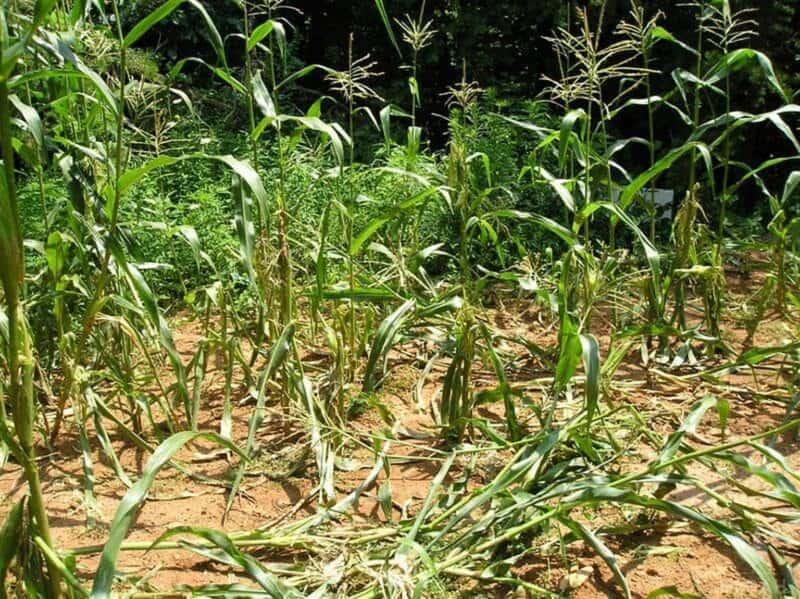
On the flip side, if you are supplementing your diet with meats, store-bought grains, or dairy, you probably won't need quite that much space.
The final factor you need to consider is the nature of the plant.
For example, artichokes, rhubarb, and asparagus are all perennial plants that sit in the garden for a full season (or more) until they are ready to be harvested.
Other crops, like vining plants, need a lot of space to spread out. If you plan your garden strategically, instead of just tossing seeds willy-nilly, you will have more success.
You can implement companion planting so that your plants work off of each other, instead of compete with each other for space.
Planning How Much to Plant
No plan is perfect for every family. It's going to vary a bit for each person and each family. You have to first think about what your family actually eats and how many people are in your family. My family consists of six people – two adults and four kids, so my family plan is different than yours.
Just because a list might include beets doesn't mean you need to include them if your family doesn't love them. We don't eat beets on a regular basis, so I only plant a few. We do eat a lot of carrots, so I use that space for additional carrots.
1. What Does My Family Like to Eat?
An important tip when it comes to vegetable gardening is growing the foods that you actually like to eat rather than things that you think you should plant or eat.
Just because homesteaders or other gardeners are growing these lovely eggplants doesn't mean you need to if you hate eggplants. If your family doesn't love garlic, you might not want to plant 20 cloves per person.
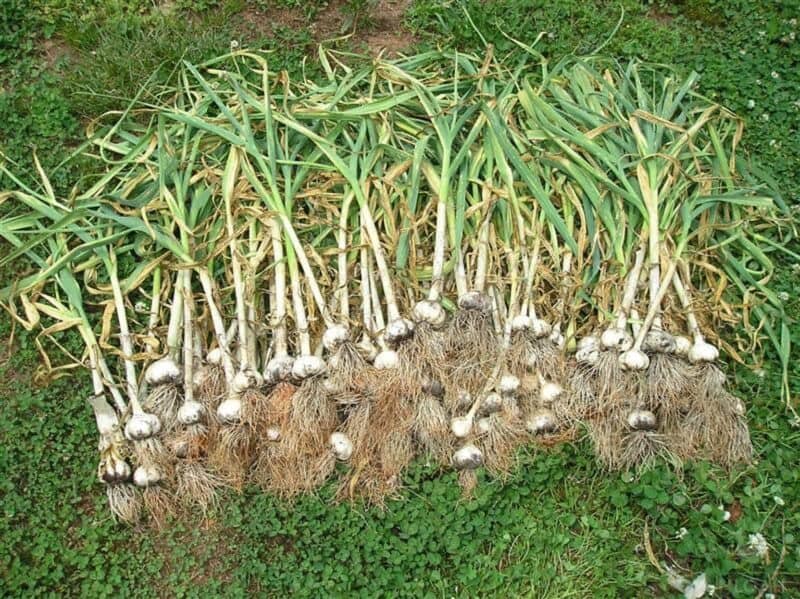
2. What Does My Family Eat The Most?
Think about your family's favorite foods and what you use most commonly for your family. For example, my family eats cauliflower, but we eat broccoli at least 2 times per week. So, I plant more broccoli than I do cauliflower.
Do you eat a lot of tomato dishes such as pasta and pizza? If so, then you need to plant more tomatoes.
3. The Age of Each Person
A child eats less than an adult. A toddler eats less than an older child. You need to keep the ages of each person in your family in mind as you create your plan. Most numbers are based for adults not children, so adjust accordingly.
4. Will We Eat Fresh or Do I Plan to Preserve the Surplus?
Eating fresh requires fewer plants, so if you want to preserve them, make sure you increase the number of plants than what is suggested.
5. How Large is My Garden Space?
Of course, one of the largest factors is the gardening space you have for your family. While the idea of growing enough of a vegetable to meet your family's needs, it might not be possible if you don't have the space. Each inch in your garden is valuable, so you need to use them to their maximum potential.
6. What Can I Successfully Grow in My Growing Zone?
Lastly, you have to think about your climate. For those of us who live in colder climates, you won't be able to grow some things, such as sweet potatoes.
If you are able to with the help of a greenhouse or season extender, you might have a smaller crop. So, this will change how many plants per person you grow.
How Much Should I Plant To Feed My Family For A Year?
Here are a few recommendations mostly found in the book Reader's Digest Back to Basics. Some of these amounts may be way off for your family, but like I said it's at least a good general idea.
Again, think about the foods your family likes to eat. If you plant fifteen bush bean plants per person, and you have a family of four, that's sixty bush beans. That's assuming that everybody in your family enjoys eating bush beans.
These numbers also do not take into account failed plants. These are just the numbers that are required to harvest for your family.
If you plant fifteen bush bean plants per person, and four fail to produce fruit, then really you have only planted eleven plants. So figure high.
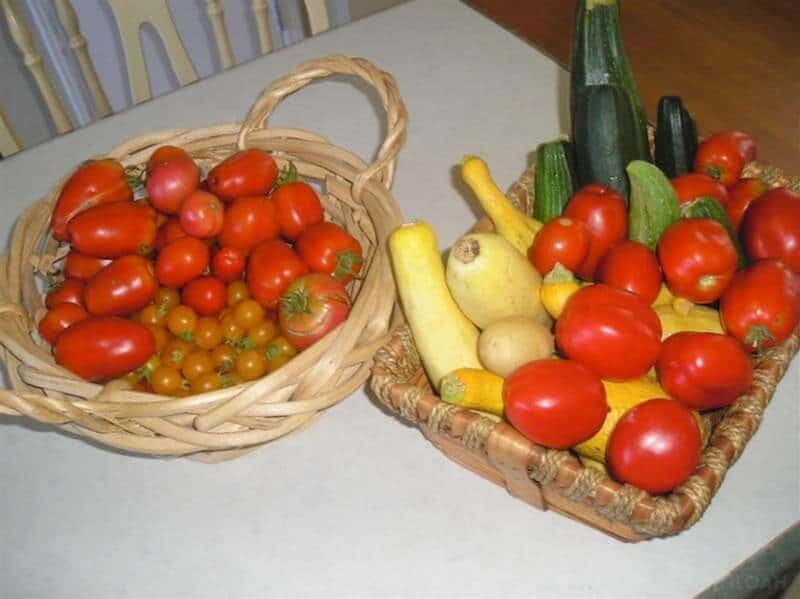
Take a look at the recommended planting amounts for each plant. These numbers should be adjusted based on your preferences and ages of your family members because they are based on the needs of an average adult.
| Vegetable Crop | Plants Per Person | When to Plant |
|---|---|---|
| Arugula | 5-10 Per Person | Spring and Fall Crop |
| Artichokes | 1-4 plants per person | |
| Asparagus | 10-15 Per Person | Perennial |
| Beets | 10-15 Per Person | Spring and Fall Crop |
| Beans (Bush) | 10 to 15 Per Person | Summer Crop – Succession Planting |
| Beans (Lima) | Beans (Lima) | |
| Beans (Pole) | 2-5 Per Person | Summer Crop |
| Beets | 2-4 poles of beans per person (each pole with the four strongest seedlings growing) | |
| Broccoli | 3-5 Per Person | Spring and Fall Crop |
| Brussel Sprouts | 3-5 Per Person | Spring and Fall Crop |
| Cabbage | 2-4 Per Person | Spring and Fall Crop |
| Carrots | 20-30 Per Person | Spring and Fall Crop – Succession Planting |
| Cantaloupe | figure on about 4 fruits per plant (estimate how much your family would eat) | |
| Cauliflower | 3-5 Per Person | Spring and Fall Crop |
| Celeriac | 1-5 plants per person | |
| Celery | 3-5 Per Person | Spring and Fall Crop |
| Collards | 5 Per Person | Spring and Fall Crop |
| Corn | 15 to 25 Per Person | Summer Crop – Succession Planting |
| Cucumbers | 3-5 Per Person | Summer Crop |
| Eggplant | 1-3 Per Person | Summer Crop |
| Kale | 1 5' row per person | |
| Garlic | 15-20 Per Person | Spring and Fall Crop |
| Lettuce | 5-6 Per Person | Spring and Fall Crop – Succession Planting |
| Melons | 2-3 Per Person | Summer Crop |
| Okra | 4-5 Per Person | Summer Crop |
| Onions | 15-20 Per Person | Spring Crop |
| Parsnips | 5-10 Per Person | Spring and Fall Crop |
| Peas | 10-20 Per PErson | Spring and Fall Crop – Succession Planting |
| Peppers | 3-5 Per Person | Summer Crop |
| Potatoes | 15-20 Per Person | Summer Crop |
| Pumpkins | 1 plant per person | |
| Radishes | 20-30 Per Person | Spring and Fall Crop – Succession Planting |
| Rhubarb | 2-3 Per Person | Perennial |
| Spinach | 15 Per Person | Spring and Fall Crop |
| Squashes | 2-3 Per Person | Summer Crop – Succession Planting |
| Summer Squash (including Zucchini) | about 10 per family | |
| Sunchokes | 5-10 Per Person | Spring Crop |
| Sweet Potatoes | 5-10 Per Person | Summer Crop |
| Swiss Chard | 2-3 Per Person | Spring and Fall Crop |
| Tomatoes | 3-5 Per Person | Summer Crop |
| Tomatillo | 1-2 Per Person | Summer Crop |
| Turnips and Rutabagas | 10-20 Per Person | Spring and Fall Crop |
| Watermelon | about 1/2 oz. seeds per family |
How Much Space Do You Need to Feed a Family of 4?
Consider, too, how much space is needed to grow a certain amount of plants. Some crops, like tomatoes or beans, produce hundreds of fruits on a single plant, and will therefore take up less space.
Others, like corn, produce only a couple. If you're short on space and trying to get the most bang for your metaphorical buck, consider only planting crops that have high yields, or perhaps plant more of those items instead.
One of the biggest questions you might have is how much space do you need to garden to feed your family of four. In general, to grow all the food you need, expect to need between 4,000 and 6,000 square feet.
This number can be lower by the use of season extenders, succession planting, and vertical gardening. These methods can help to increase the amount of harvest you can achieve in a small space.
Whenever possible, grow calorie crops. These crops tend to have a high caloric content per weight.
These crops store well and have hundreds of uses, making them more versatile than, say, asparagus. The top five calorie crops are beans, squash, wheat, potatoes, and corn.
Consider alternatives to direct-in-ground planting. While it might seem that traditional gardening is the only option, there are dozens of other ways to grow enough vegetables to feed your family – and keep n mind that the planting and growing doesn't have to stop just because the first frost hits.
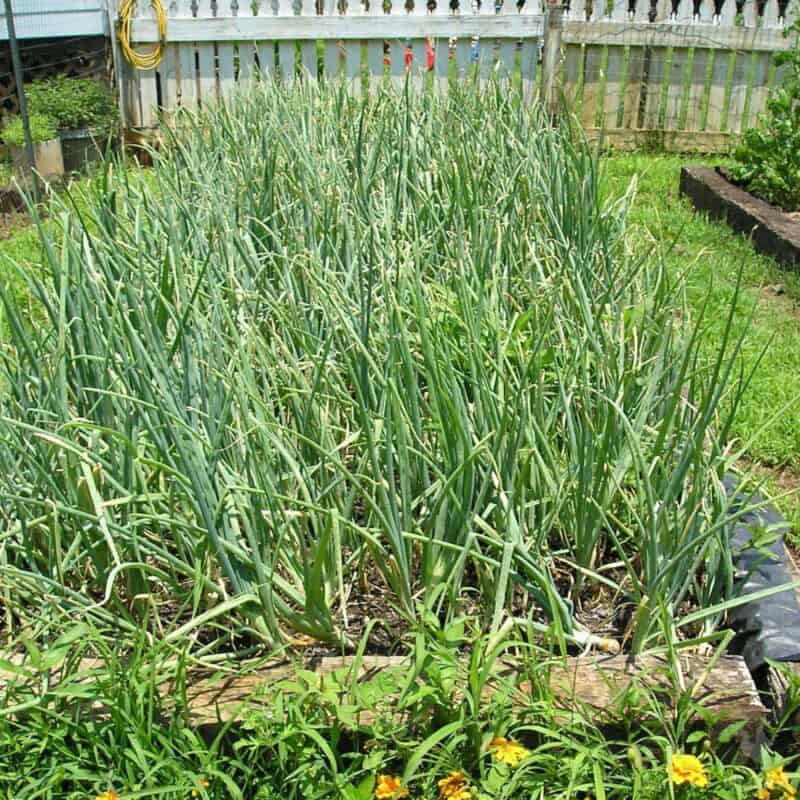
First, remember to use your space strategically. Plant early, mid, and late varieties of your crops.
Many people don't realize that several types of crops, like peas, beans, onions, corn, and potatoes have several stages of crops that can help you mitigate the losses due to pests and disease (as the plants will be in different growing stages at all times) and increase your overall yield.
This is a great option if you have unpredictable weather, and frequently lose crops due to conditions such as an early or late frost. It also makes harvest time a bit easier for you, because you aren't harvesting hundreds of pounds of vegetables to preserve all at once.
You can also plant some crops in containers. This is especially useful if you are an urban gardener, or even if you are considering extending your growing season by bringing some plants indoors later.
Plant some tomatoes on your deck in a planter, and you'll be able to bring the plant inside so it continues to produce after the first frost has hit.
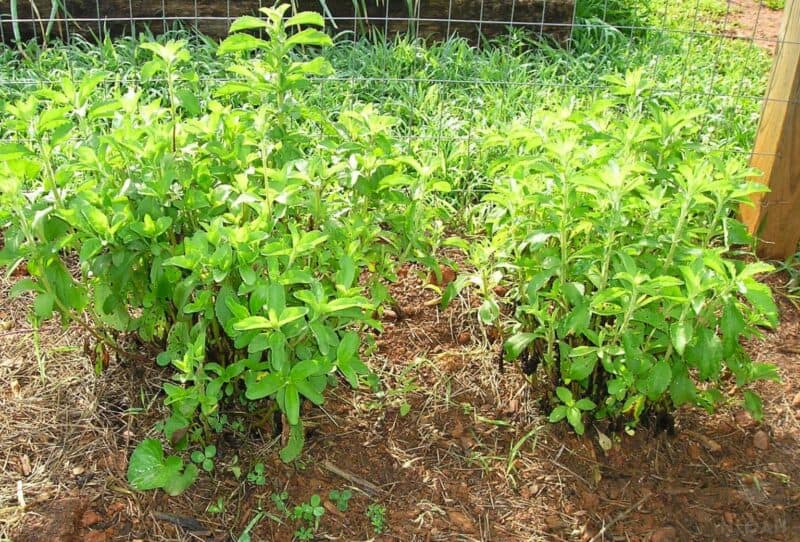
How Do I Make My Summer Harvest Last?
Again, if you've been paying attention, you can easily stretch out your growing season so it doesn't necessarily have to last past the first frost!
However, there are many ways to only grow during the summer months and still enjoy a bountiful harvest that will last you and your family throughout the year.
Get used to preserving your own food. Most foods can be canned, either through the use of a water bath canner or, even more safely, with a pressure canner.
Experiment with canning recipes to find one you like. Almost any vegetable is delicious when pickled, and this will give you a great source of nutrients during the colder months.
If you can't can all of your produce – or don't necessarily like the taste of all of the different vegetables – another option is to freeze your veggies. Just about anything, with the exception of perhaps lettuce, can be frozen.
Use a vacuum sealer to help save space in your refrigerator, as well as to reduce the likelihood that your food will become freezer-burnt. You can also dehydrate some vegetables to make them last a little bit longer outside of cold storage.
If you have a root cellar, this is a great way to store hardier vegetables like squashes, potatoes, carrots, and beets. These vegetables will last for several months when given the right conditions.
Plan ahead so that you have plenty of produce to last you throughout the winter. Most of us are lucky in that we can go grocery shopping if we need to – very few people actually need to rely on their own land to get them through the entire winter.
Using Season Extenders to Grow More Food
Can you imagine how many more vegetables you can grow if you have a few extra weeks of warm, growing weather?
Some of us don't live in climates that allow for long growing periods, so we have to use season extenders to get a jump start on spring gardening and to extend the growing season into the fall and winter.
Basically, season extenders are anything that you can use to protect your plants from the weather extremes. Some vegetables love cooler weather, but they don't love damp and bitter weather. Freezing ice can quickly kill your crops. Think of succession extenders like a nice jacket!
There are a few common season extenders that you might want to try:
#1. Cold Frames
Cold frames are just like a small raised bed frame that are covered by glass, creating a greenhouse-like effect. The glass cover opens and closes with hinges, so you can open it up when the weather is warm.
#2. Greenhouses
Everyone knows about greenhouses! They can be heated and unheated, and you can find them in any sizes and materials. If you're the handy type, you could make a DIY-greenhouse out of wood and glass, but you can also use metal hoops and plastic film.
Most greenhouses are large enough to walk through. If you have kids, you can keep them in a playpen when you're working with your plants. While greenhouses are great and offer a warm, dry environment, and they're also expensive.
#3. Low Tunnels
A low tunnel is also called a mini-hoop house, and they're like a small greenhouse. They only cover one or two garden beds. Gardeners love low tunnels because they're easy to make, easy to put up and take down, plus you can reuse them elsewhere.
#4. Row Cover
Row covers are often called floating row covers, and they're basically thin fabric made of some sort of spun synthetic fabric. This fabric offers protection from the cold, wind, and pests, but it's thin enough to transmit light and rain to reach the soil.
#5. Cloches
A cloche is a small cover that protects a single plant. They look like a glass bell-shape, but some gardeners use plastic milk jugs to create a simple cloche. Cloches are cheap and easy to make, but they only protect a single plant, so they're not ideal for large gardens.
You might also try an indoor growing system. Many people are having great success using hydroponics systems, which involve growing plants in sand, liquid, or gravel with added nutrients (and absolutely no soil at all!).
How to Use Succession Planting to Increase Your Harvest
Succession planting is a gardening technique to increase your yield. Your goal is to make the most of your garden space, so it works great for any garden size. You'll always have a fresh harvest.
Succession planting is another option that is closely related to the latter choice. Some crops, like beets and radishes, grow very quickly.
Therefore, as soon as one crop is finished or about to be finished (if you have the space), you can seed another one right away.
This will allow you to receive several harvests of the same crop without having to wait until the following season.
Again, gardening doesn't have to stop just because the snow has started to fall. There are several option sot keep gardening throughout the fall and winter.
There are 4 different methods of succession planting. You might use one or several methods to get the most out of your crops.
#1. Companion Planting
Companion planting is a way to interplant two or more crops together at the same time with different maturity rates. Certain plants encourage growth while other plants decrease growth.
#2. Staggered Planting
One of my favorite methods is staggered planting. You plant the same crop every few weeks, giving you a continuous harvest over the growing period. Instead of everything maturing at one time, a new crop will be ready, one will be growing, and you'll plant a new row. A few ideal crops for staggered planting include:
- Greens
- Beets
- Bush Beans
- Carrots
- Cucumbers
- Lettuce
- Radishes
- Kohlrabi
- Squash
#3. Harvest and Sow
This method has you growing different vegetables in the same space over the season. Once one crop is done, you replace it with another crop.
For example, you might plant some greens, harvest, amend the soil, and reseed with beans. After the beans are harvested, you plant more greens or lettuce for the fall growing season.
#4. Same Crop with Different Maturity Dates
Planting the same variety of crops with different maturity dates helps to have an uninterrupted harvest throughout the season. For example, some gardeners plant different varieties of corn have different dates to maturity.
Growing Enough Food to Feed Your Family
Growing enough food to feed your family of 4 takes a lot of time and effort. By using the right techniques, such as succession planting and season extenders, you can maximize how much you can grow in your home garden.
Make sure to pick the right vegetables that your family eats on a regular basis, and use a variety of preservation methods. With the right planning, you can feed your family without going to the store.
If you are an experienced gardener, and have a good suggestion for planting amounts, or want to share what works for your family, I'd love to hear from you!

Source: https://www.newlifeonahomestead.com/how-much-should-i-plant/
0 Response to "How Many Plants to Feed Family of Four Calories"
Post a Comment